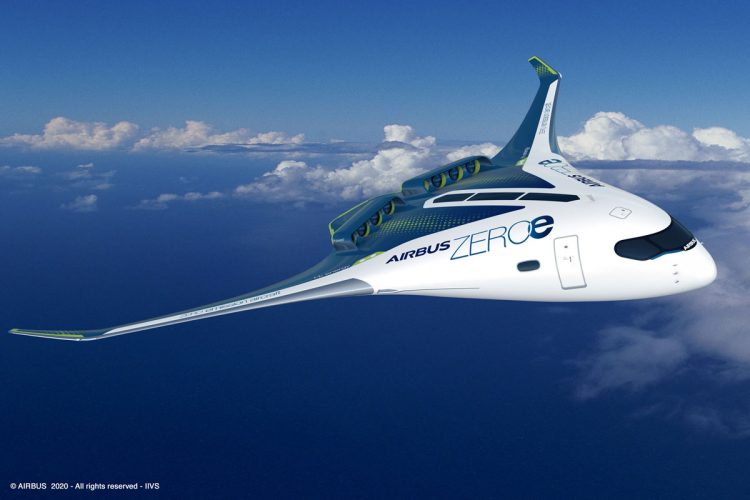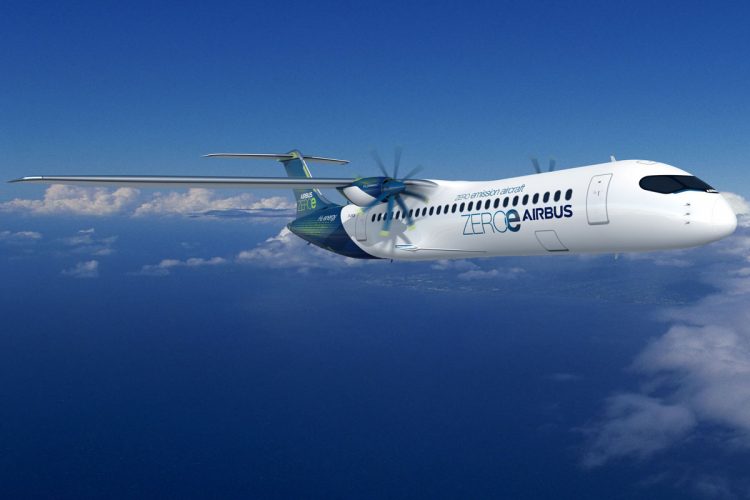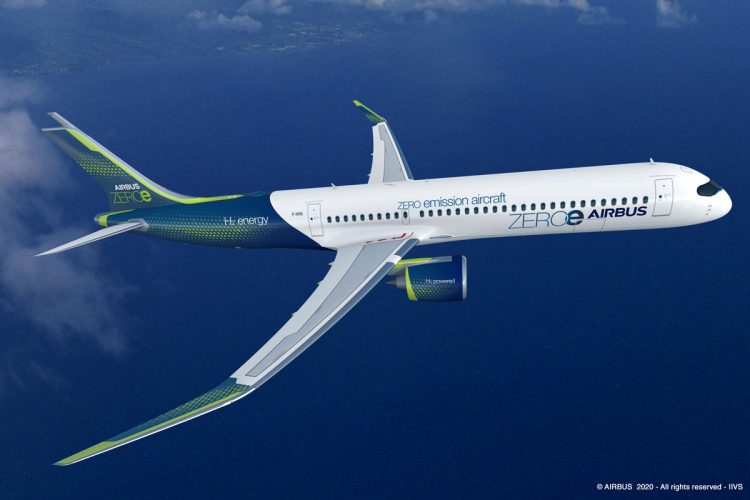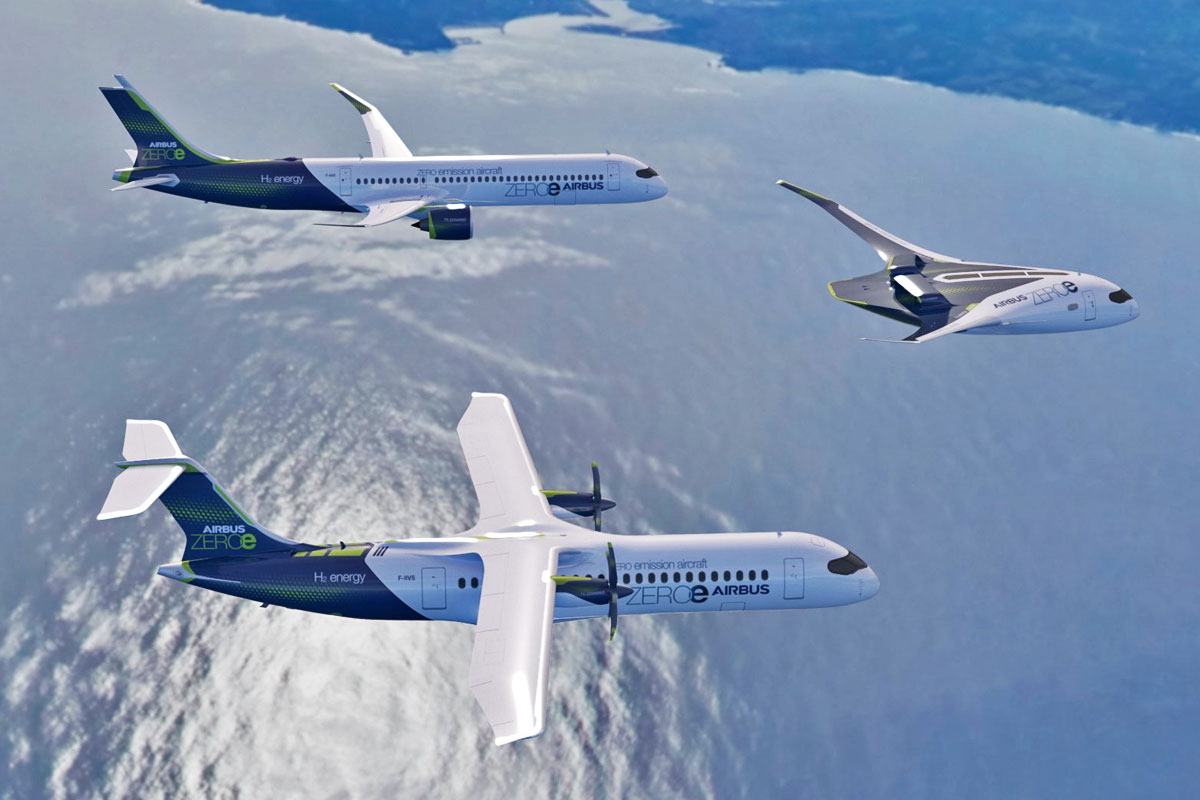Airbus decided to make a different bet on the alternative to using fossil fuels to power its commercial planes. Instead of opting for electricity, the European airframer on Monday unveiled a study of technologies based on the use of hydrogen as a primary fuel source.
To illustrate the possibilities of this technology, Airbus showed three concept aircraft, a jet similar to those currently produced, but which uses hydrogen, a turboprop and a BWB (Blended-Wing Body) project.
“This is a historic moment for the commercial aviation sector as a whole and we intend to play a leading role in the most important transition this industry has ever seen. The concepts we unveil today offer the world a glimpse of our ambition to drive a bold vision for the future of zero-emission flight,” said Guillaume Faury, Airbus CEO. “I strongly believe that the use of hydrogen – both in synthetic fuels and as a primary power source for commercial aircraft – has the potential to significantly reduce aviation’s climate impact.”
Named “ZEROe”, these projects aim to achieve the goals of decarbornization in the aviation industry and could be available from 2035. Faury, however, conditioned the development of technology to the help of governments due to the need to invest in the transition to the use of hydrogen and which will also require airports to adapt to transport, store and handle this type of fuel, considered clean, but complex to be kept safe.

The big challenge for hydrogen powered aircraft is how to store fuel, which could not be carried on the wings like jet fuel. The solution studied by Airbus foresees a tank at the tail of the plane, which would be longer than that of current planes in the case of similar projects.
Airbus’ three ZEROe concepts:
Turbofan design: with a capacity of 120 to 200 passengers, this plane is similar to an A320, but has thinner wings but with a much larger wingspan, in addition to the elongated tail to receive hydrogen. The engines would be adapted to run on clean fuel instead of jet fuel, enabling a range of at least 2,000 nautical miles.
Turboprop design: resembling an ATR model, the turboprop would use the same concept as the turbofan and offer a range of about 1,000 nm and capacity for up to 100 passengers.
BWB Project: it is the most unusual and perhaps the most suitable to use hydrogen, since it would be able to store the fuel in its bulky structure. In Airbus’ view, this plane could carry up to 200 passengers.

The option for hydrogen, however, would require an alignment not only of the industry but of the main countries that dominate aircraft development technology, which in itself is already a more political than technical challenge. Certainly no one would accept to be left behind in this “green race” – not even Russians and Chinese, and especially the Americans.
Together with the support from government and industrial partners we can rise up to this challenge to scale-up renewable energy and hydrogen for the sustainable future of the aviation industry,” said Faury.


